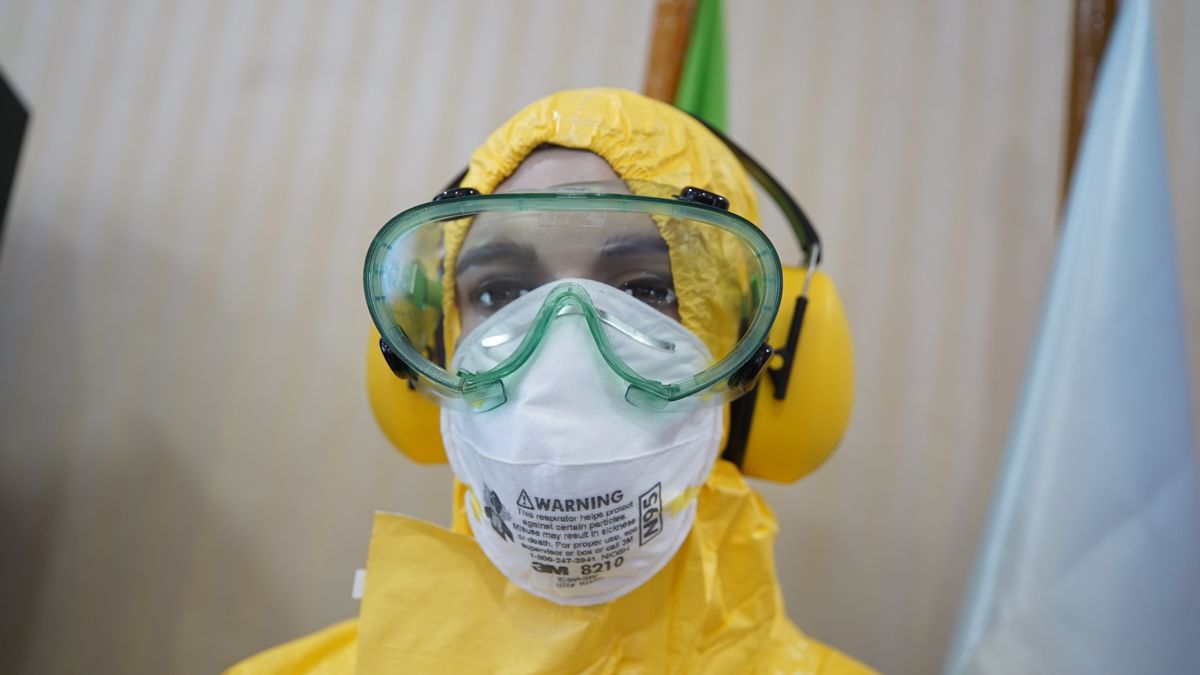JAKARTA - The corona virus, which originates from a bat animal, is spreading so rapidly that it has the potential to become a pandemic. Technological developments have helped reduce the impact of the virus. When compared with similar disease outbreaks a century ago, technology plays a vital role in preventing the spread of the virus.
As reported by the official government media of Wuhan, China, the first case of the corona virus was discovered on December 12 last year. Then, on 29 December the cases started to break out. Until China finally announced the corona virus outbreak officially to the world at the end of the year.
Now that the virus has spread for almost two months, according to reports (whose data is constantly changing) gisanddata.maps.arcgis.com, 31,519 cases of the coronavirus have been recorded while 638 people have died.
According to a doctor graduated from Harvard University Jason Arora whose writing was published by SCMP, situations like this for some cases occur disinformation, slow handling, inconsistency and confusion. However, this is not the case in a modern era like this.
What he saw was that the speed of the international response scale for this corona virus case was the fastest in history. On that basis, he said, technology has an important role in several functions such as disseminating information and mobilizing resources.
On December 31, 2019, China reported to WHO that they discovered a virus that had never been known before. The virus is thought to have originated in a meat and seafood market in Wuhan. Then the next day, the market was closed immediately.
On January 9, WHO made a global announcement about this virus. The next day, China provides information about viral DNA to the world health community. Then on January 11 the vaccine began to be developed. And all of this happened in less than two weeks.
In the world of medicine, said Arora, public health researchers have predicted the spread of disease by using the latest data analysis science at least to help how the international health community deals with it.
Meanwhile, the discovery of the DNA sequence means that the global health system can develop diagnostic tests immediately. And sure enough, it took only four weeks since the coronavirus was announced globally, a group in the United States has designed a potential vaccine.
This is not surprising, because in the Inovio Laboratory, San Diego, using the new DNA sequencing technology, it only takes three hours to get a potential vaccine. Reportedly, the new vaccine will begin to be tested on humans in the summer. And a safe vaccine is said to be available before the end of this year.
Based on information obtained from the lab, the main driver behind this rapid response is the International Coalition for Epidemic Preparedness that was formed through the World Economic Forum three years ago.
In addition, the smooth communication factor throughout the global community is very helpful for researchers to take advantage of technology and synergize the research of researchers who come from different parts of the world. So that when a problem has been resolved in one part of the world, that knowledge can be quickly transferred to another part of the world.
Now, the way the world deals with epidemics that can wipe out humans in an instant is much better. At least the international health community has learned a lesson from the case of the spread of the SARS virus twenty years ago.
At that time, the same virus that attacks the respiratory system spread to more than two dozen countries in four worlds, and killed 813 people in a period of eight months.
The problem is that in the past the local authorities did not immediately open communication with the international community that they had discovered a new and deadly strain of the virus. To the extent that people were immediately infected before people knew of the discovery of a deadly new virus outbreak.
Furthermore, the world has learned a lot from the events of a century ago during the H1N1 pandemic in 1918, also known as the Spanish flu pandemic. The spread of this plague was recorded as the most severe in the history of the modern era. In that event, at least 50 million people died.
At that time, the doctors' knowledge was not up to date now. They had a limited understanding of the virus itself, while there was no such thing as a diagnostic test at that time. They don't know there is a flu virus, there is no vaccine, let alone an antibiotic to treat it.
"Absolutely lacked the necessary resources and expertise (at that time) ... The means of communication were limited to the early days of radio, post and telegram," says Harvard University graduate doctor Arora.
The English, Chinese, Japanese, Arabic, and French versions are automatically generated by the AI. So there may still be inaccuracies in translating, please always see Indonesian as our main language. (system supported by DigitalSiber.id)













